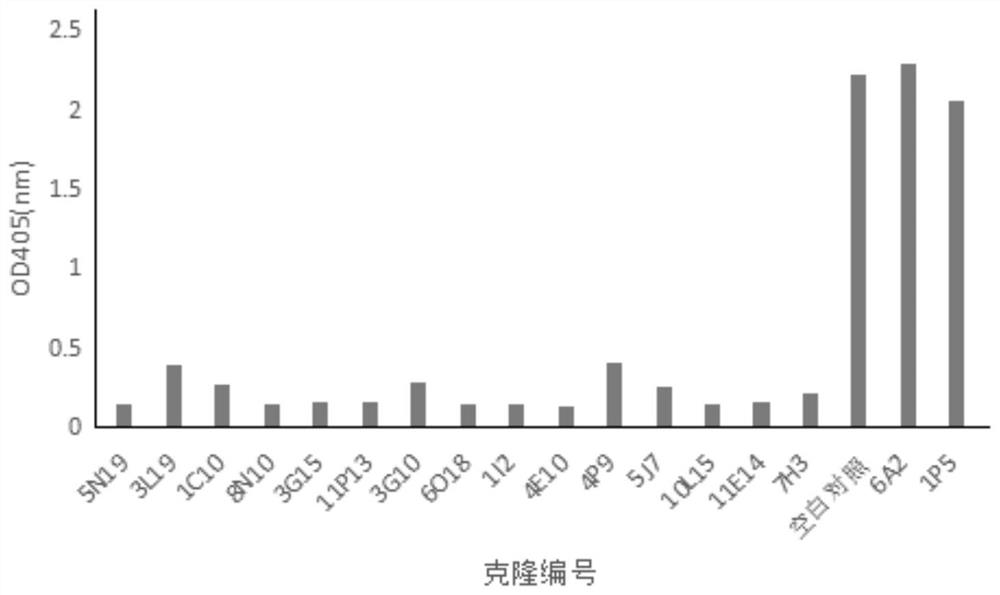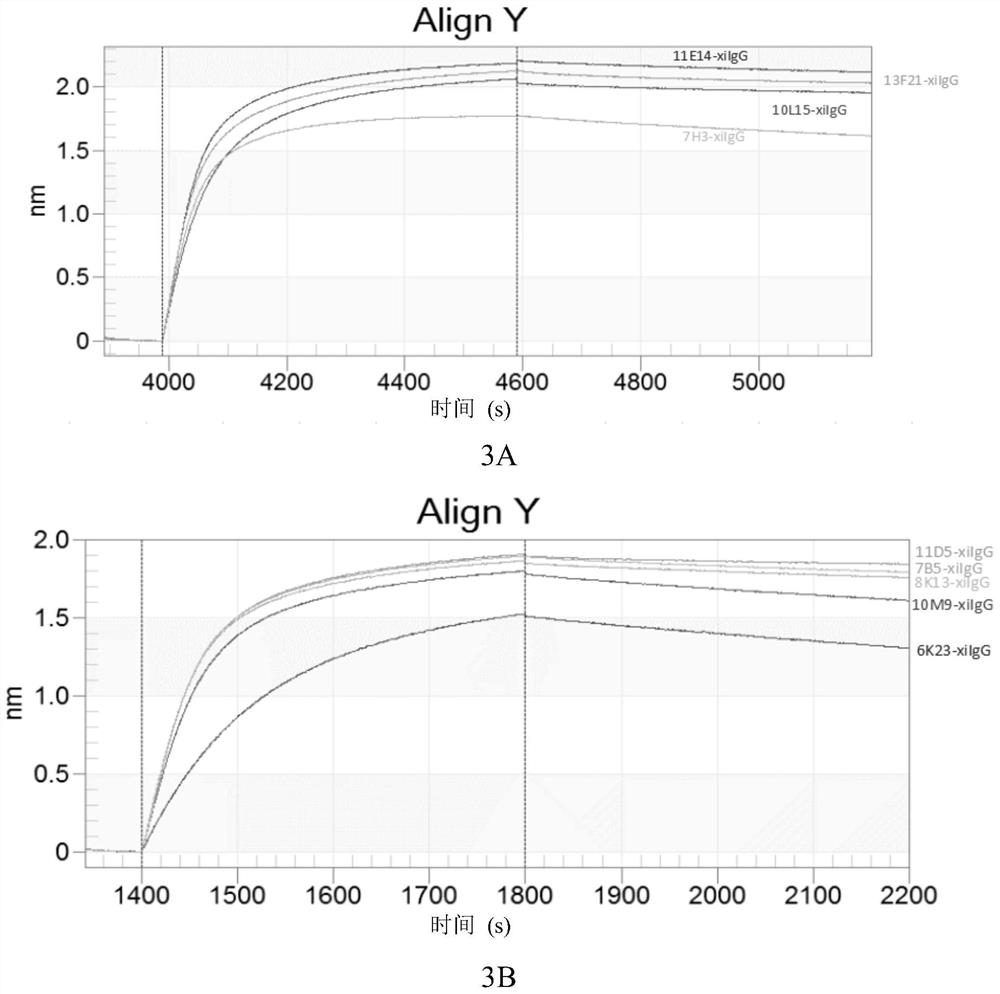Antibody aiming at human complement protein C5 and application thereof
A technology of antibody and protein, applied in application, antibody, anti-animal/human immunoglobulin, etc., can solve problems such as non-response
- Summary
- Abstract
- Description
- Claims
- Application Information
AI Technical Summary
Problems solved by technology
Method used
Image
Examples
Embodiment 1
[0093] Example 1 Immunization of Balb / c mice with human complement protein C5
[0094] Antigen Recombinant Human Complement Protein C5 (Gln19-Cys1676) was purchased from Sino Biological (Product No. 13416-H18H). This protein was recombinantly expressed by human 293 cells (HEK293), with a histidine tag at the C-terminus and a Flag tag at the N-terminus.
[0095] Referring to Antibodies: A Laboratory Manual, Second Edition (Edward A. Greenfield 2012), 8-week-old Balb / c mice were immunized for a total of 42 days at intervals of 14 days. Human C5 protein was emulsified in complete or incomplete Freund's adjuvant, and it was injected unilaterally into the subcutaneous tissue of the back of the neck, the root of the tail, and the groin of the mouse, and into the peritoneal cavity. Blood was collected from the tail vein on the 35th day of immunization, and after the antibody titer was detected by ELISA, spleen cells of immunized mice were fused with myeloma cells.
Embodiment 2
[0096] Example 2 Screening and identification of anti-human C5 monoclonal antibody hybridoma cell line
[0097] Human C5 protein was used to immunize the spleen cells of Balb / c mice, and fused with myeloma cells using PEG or electrofusion method, and the fused hybridoma cells were 1x10 7 Cells / well were inoculated in HAT-containing medium and placed in a 384-well plate. After 5 days of culture, the medium was replaced with HT-containing medium to continue culturing for 2-3 days to screen hybridoma cells. After culturing in 384-well plates for 7-10 days, the supernatant of the cells was taken for ELISA experiments to screen hybridoma mother clones capable of secreting anti-human C5 antibodies.
[0098] The method for screening human C5 binding agents by ELISA is as follows: Dilute human C5 protein to 1 μg / ml with PBS buffer, coat 100 μl per well on a 96-well plate (Microwell 96F 167008, Thermo) and incubate overnight at 4°C; take out the next day The 96-well plate was washed...
Embodiment 3
[0100] Example 3 Sequence determination of anti-human C5 monoclonal antibody
[0101] Add the hybridoma mother clones that secrete anti-human C5 antibody and have the activity of inhibiting complement-dependent hemolysis into 96-well plate by limiting dilution method, observe and label the monoclonal cells under the microscope after 2-3 days, and pass ELISA experiment and Monoclonal hybridoma cells secreting anti-human C5 monoclonal antibody were screened by hemolysis assay.
[0102] After expanding the culture of the screened monoclonal hybridoma cells, the total RNA of the cells was extracted according to the instructions of the RNAfast200 kit (Shanghai Feijie Biotechnology Co., Ltd.); the total RNA of the hybridoma cells was reversed using 5×PrimeScript RT Master Mix (Takara) Record into cDNA; use degenerate primers and Extaq PCR reagent (Takara) to amplify antibody light chain variable region IgVL (κ) and heavy chain variable region VH sequence; use PCR clean-up Gel extr...
PUM
| Property | Measurement | Unit |
|---|---|---|
| molecular weight | aaaaa | aaaaa |
Abstract
Description
Claims
Application Information
 Login to View More
Login to View More - R&D
- Intellectual Property
- Life Sciences
- Materials
- Tech Scout
- Unparalleled Data Quality
- Higher Quality Content
- 60% Fewer Hallucinations
Browse by: Latest US Patents, China's latest patents, Technical Efficacy Thesaurus, Application Domain, Technology Topic, Popular Technical Reports.
© 2025 PatSnap. All rights reserved.Legal|Privacy policy|Modern Slavery Act Transparency Statement|Sitemap|About US| Contact US: help@patsnap.com



